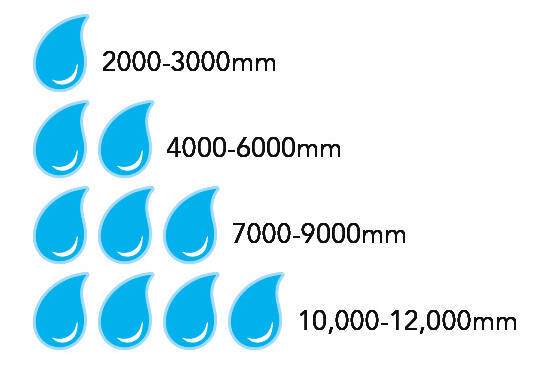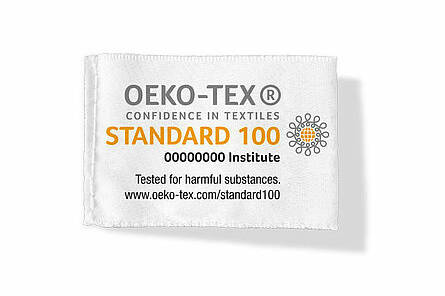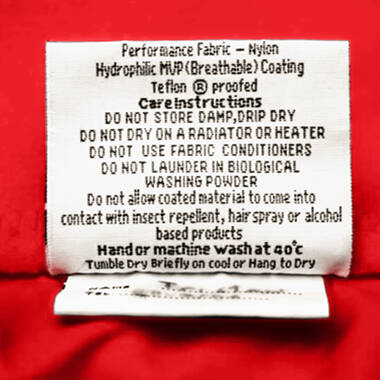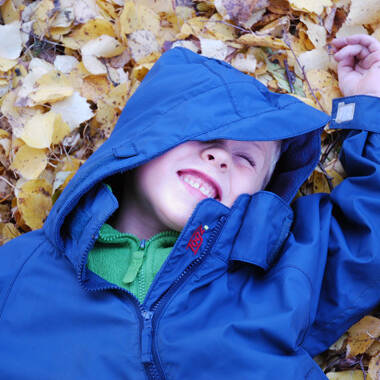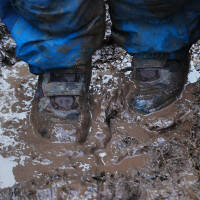Questions to consider when buying outdoor clothing for children
- What is your budget?
- How many sets of clothes are required?
- What activities will it be used for?
- How often will it be used?
- How waterproof is the clothing?
- Is the material breathable?
- Is the material made in a way that is environmentally considerate?
Read on for more information and suggestions for all these questions.
What is your budget?
This will be the most significant limiting factor on the type of clothing you can buy.
A set of top quality waterproofs for every child in your class/group can be expensive, and if you also need wellies and hats, and warm layers, it will increase your budget.
If your budget doesn’t provide for all of the clothing, some compromises will need to be made.
Follow up question: do you need to buy jackets as well as trousers?
Waterproof trousers are often worn even if it is not raining, to protect from the wind, mud, damp and vegetation. If a good quality trouser is worn, the waterproof jacket is less important, except of course, for when it is actually raining.
Our recommendation
Even if it is not raining during your session, the ground is most likely to be damp. If you can afford it, we recommend buying higher quality waterproof trousers or dungarees & a lower quality or budget jacket. The children can use their own coats and maybe you can supplement these with a few shell jackets to use over the children’s coats should it rain.
Budget jackets are less breathable than the more expensive ones so can become damp inside if a child sweats. These jackets are fine, providing you are not planning to wear them for long periods of time. An economy jacket can often be sufficient for most situations, even robust play situations.
What’s the difference? High budget vs low budget clothing
Higher specification waterproof clothing is made from more robust materials that are often both breathable and waterproof. Better quality clothing will offer taped seams, waterproof protected zip systems and soft-feel material around the collar and cuffs where it is likely to rub on children’s skin.
This clothing is often designed not to rip. If it is snagged and a small tear occurs, it can be repaired with a patch or some tape.
Good quality, lower budget clothing is often waterproof but less robust and not breathable. It is more suitable for less adventurous outdoor play, where children are less likely to come in contact with abrasive surfaces and spiky plants and shrubs. Often these clothes will rip easily if snagged.
Suggestions on how to spend your budget
Budget 1: less than £20 per child
If you want a waterproof jacket and trousers for light play situations then a quality pack-in-the-bag jacket and trouser set is perfect. It offers excellent value for money and is ideal for keeping the wet out. We do NOT recommend it for adventurous outdoor play.
If your outdoor play is going to be more adventurous then we suggest that you buy trousers and not jackets. Most children will have their own coat allowing you to buy better quality, more robust trousers.
Budget 2: £20-£35 per child
As your budget increases, there are more choices in terms of clothing. At Muddy Faces we stock a range of waterproof trousers and dungarees that are robust and waterproof and ideal for adventurous play.
We are very happy to discuss your clothing requirements and arrange for samples to be sent out (no obligation to buy).
Please note: samples need to be returned by you unused if you do not want to purchase them.
Contact info@muddyfaces.co.uk to discuss your requirements.
How many sets of clothing are required?
Do you need to buy a full class set or could you manage with a smaller number, for those children who come ill-prepared or have forgotten their kit?
What activities will it be used for?
What will you be doing outdoors? What sort of activity will the clothing need to endure?
Light use – walking and light play such as splashing in puddles and running around
or more heavy use - which may include crawling, kneeling, sitting, climbing, sliding etc.
How often will it be used?
Occasionally or more frequently?
Once a week or less, or daily?
How waterproof is the clothing?
And how waterproof do you need it to be?
See our Waterproof ratings guide.
Waterproof ratings guide
We believe outdoor clothing is the most important piece of kit you can have to enable sustained play and learning outdoors. Through your feedback, over the last decade, we have developed a range of waterproof clothing meeting the diverse needs of many different types of settings.
Read More
about Waterproof ratings guide
Is the material breathable?
A measure of how breathable a fabric is can be expressed in terms of how many grammes (g) of water vapour can pass through a square metre of fabric from the inside to the outside in a 24 hour period.
In the case of a 20k (20,000g) fabric, this would be 20,000 grams. The larger the number, the more breathable the fabric.
Are the seams welded & taped?
Often the fabric is fully waterproof, however, where two pieces are joined together water can leak through the seam. For clothing to be fully waterproof, the seams need to be sealed. This is achieved through taping or glue/heat welding.
Seam taping covers the tiny holes made by the needle in the sewing process so they don’t leak. This is done using a heat application of thin waterproof tape.
Sometimes seams are bonded together using glue or heat, but typically they are first sewn, then taped.
Garments can be either “fully taped” or “critically taped” – the difference is that a fully-taped garment has every seam taped, while a critically-taped garment is taped only on high exposure areas like the neck, shoulders and chest. Without adequate seam-sealing you’ll get wet even with the best waterproof/breathable fabric.
Is the material made in a way that is environmentally considerate?
See our Environmental guide.
Do you require additional features?
Reflective strips and patches
Many children’s outdoor clothing ranges have reflective strips as standard. This is to make the wearer more visible in low light and is a good safety feature if clothing is to be worn around traffic.
Stirrup straps
Stirrup straps help keep trousers in place over welly boots. In our experience, these straps can wear out or worse, apply pressure to the ankle seam, which results in the clothing ripping around the hem or cuff.
We always remove straps and allow trousers to hang loose or put elasticated cuffs higher up wellies to allow for kneeling and a range of movement, so less pressure is applied to the material.
Adjustable fastenings
Many outdoor clothes have adjustable velcro strips and poppers, allowing for room for growth.
Elastication
Elasticated ankle cuffs help hold clothing in place over welly boots.
See also
Waterproofs care guide
Waterproof clothing, if maintained in the correct way, should last for a long time, giving good value for money. However, you can very quickly reduce the effectiveness of waterproof material, so it is important to understand the clothing and how to care for it correctly.
Read More
about Waterproofs care guide
Layers explained
It's not always obvious what the best outdoor clothing is to support effective outdoor play and learning. In this guide we look at the various elements of clothing required, with a focus on layering.
Read More
about Layers explained
How to get ready
For many group leaders, putting outdoor clothing on, particularly with young groups, can be quite an arduous task. This section offers some suggestions on how to get your group organised and outside more easily and speedily.
Read More
about How to get ready
Outdoor clothing in the Muddy Faces shop
Clothing & Footwear
There is no such thing as poor weather. Our enjoyment of the outdoors relies on good quality clothing and an effective clothing policy. Take a look through this section to find outdoor play and Forest School clothing for early years, children, youth and adults.
For more information about outdoor clothing explore the Outdoor Clothing section of the OUTDOOR HUB. You'll find information about layering, waterproof ratings, care and buying guides and much more.
